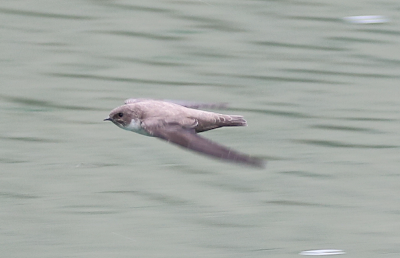29. Late winter 2021/2022
N.B Remember to click on the photograph to increase the size of the image
The exceptionally long and cold winter that we experienced at the start of 2022 contributed to a rather homebound few months for me, with little golf or birding at Secret Valley. Consequently I spent little time on bird photography during the first two months of the year. However, when I did venture out it was mainly to Akrotiri Marsh where I saw several of the more common winter migrants.
The following few species have been included as they are largely pictures that I have not previously shown.
1. Curlew
The Curlew is an uncommon passage migrant in Cyprus, and the pictured individual was seen up on the common land at Anarita Park. It is the largest of the waders and is readily identified by its long downward curved bill (which is even longer than that of the similar Whimbrel, pictured in an earlier Tweet).
The most distinctive feature of the Curlew is its slightly mournful whistling call, unforgettable once heard and identified. Those of us who were lucky enough to watch the children's TV programme "Tales of the Riverbank" many years ago quickly learned the call from the signature music. Unfortunately Curlew numbers in the UK are now much reduced.
 |
The beak also makes the Curlew distinctive when flying |
2. Crag Martin
The Crag Martin is a regular winter visitor to Cyprus and we usually have a flock of 20-30 birds visiting SVGC, usually during January and February, sometimes also seen later. The bird is more greyish-brown than the more common and distinctly black and white House Martin (which doesn't visit until later in the spring). Like all the Swallows and Martins it is an adept and athletic insectivore, catching its prey in mid-air.
The pictures below were all taken in January over the SVGC ponds.
 |
The aerodynamic shape of the Crag Martin |
 |
Note the distinctive "windows" in the tail |
 |
Skimming low over the water, catching insects |
3. Spotted Redshank
The Spotted Redshank is a scarce winter visitor to Cyprus, though is more commonly seen during its later spring migration. The individual bird pictured here arrived in early January at Akrotiri Marsh and stayed for 3 or 4 weeks before moving on. It is a medium sized wader with the typical red legs of a Redshank. The wing feathers are delineated by fine white markings and the long straight bill has a black upper mandible and a red base to the lower. There is a clear white supercilium extending back from the base of the beak to beyond the eye.
 |
Spotted Redshank: note the supercilium and red lower mandible |
 |
Note the white outlining of the wing feathers |
4. Shelduck
This rather large long-necked duck (almost a goose) is a common winter visitor to Cyprus, and there were regular small flocks feeding on the salt water pools along Lady's Mile during January and February, where they kept some small groups of feeding and roosting Flamingo company. The Shelduck is one of the most striking ducks with its bold colours of white, black and chestnut body plumage, white neck, dark green head and bright red bill. Unmistakable!
 |
The Shelduck showing typical feeding behaviour |
 |
The handsome colouring of the Shelduck, male & female |
5. Stonechat
Stonechats are resident in Cyprus all though the winter months and is one of the commonest birds seen in the early part of the year.The colours of the female are more subdued than those of the more striking black and orange of the male, but she still has attractive colours. Stonechats are frequently seen as pairs through the winter. They usually migrate north in February and early March and are not seen again until the following winter.
 |
Female Stonechat, winter plumage |
 |
Male Stonechat, winter plumage |
6. Black-winged Stilt
Another very strikingly coloured wader, the Black-winged Stilt does not usually overwinter in Cyprus, generally arriving in March onwards. However this year there were many individuals and pairs along the coastal marshes, and the pair pictured were seen in a small pond close to the Environmental Centre at Akrotiri. It is an elegant wader with very long red legs, a white and black body and head, and a very long needle-like bill.
 |
Male Black-winged Stilt: very long legs and bill |
 |
A pair of Stilts, female behind the male |
7. Shoveler
This is another very common winter migrant to Cyprus, reaching peak numbers between December and the end of January. Most have departed by May. The unusually large 'spatulate' bill is distinctive and unmistakable. The male is much more brightly coloured than the female, being black, white and chestnut with a dark green head and yellow eye. The female is a mottled brown by comparison.
The Shoveler feeds by sifting small creatures from the water through its beak (somewhat in the manner of a baleen whale), paddling around in small circles as it does so.
 |
Shoveler, clearly showing spatulate bill shape |
 |
The Shoveler drake showing yellow eye and typical feeding |
_____________________________
Birds from March and April 2022 will be the subject of the next Tweet
All text and photographs by Trevor Fordham 5th June 2022




The Craig Martin's aerodynamism was amazing- good work capturing it Trev! My 4 year old son mistook another bird for a "bin chicken" Guess which one.
ReplyDelete